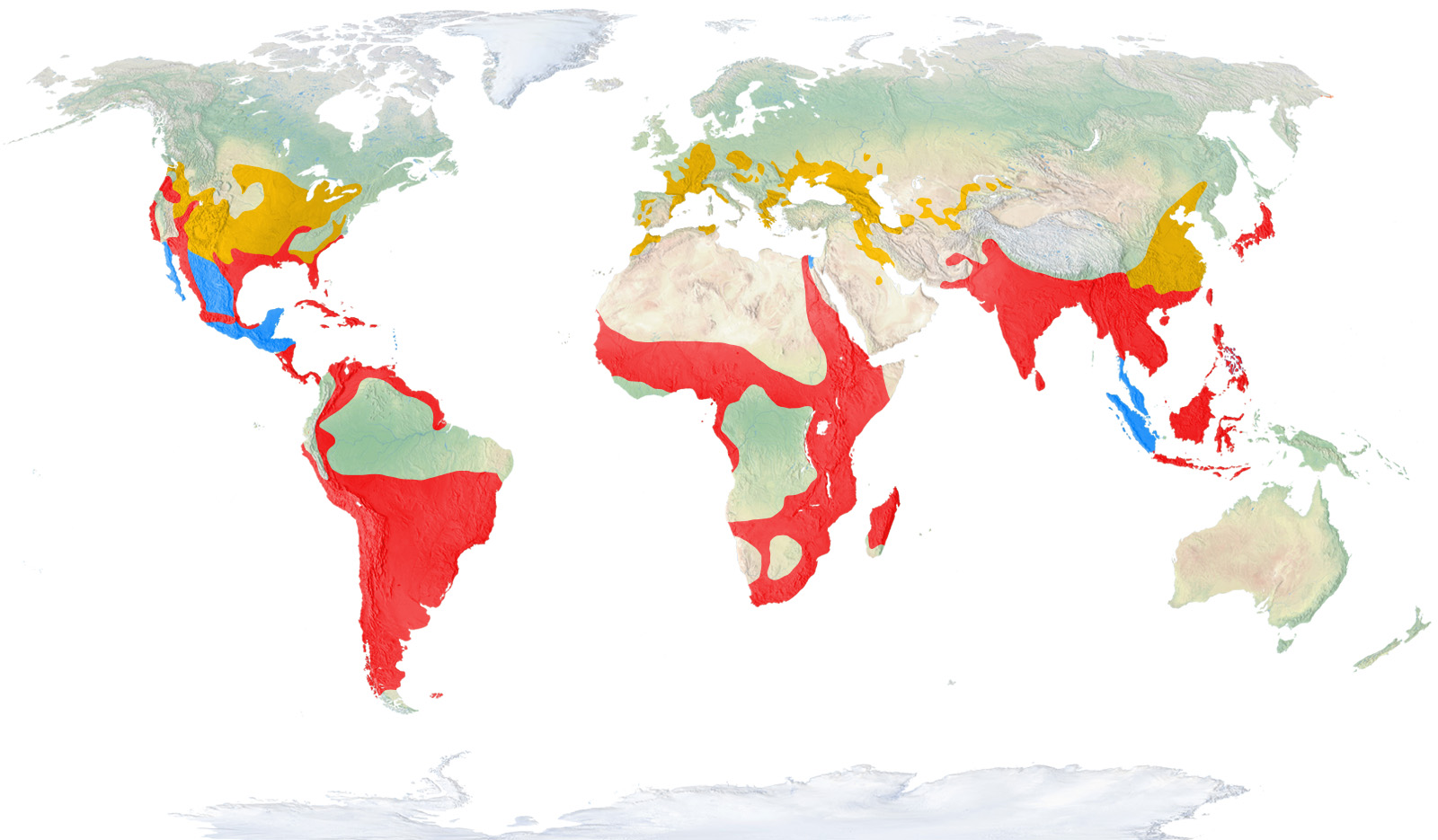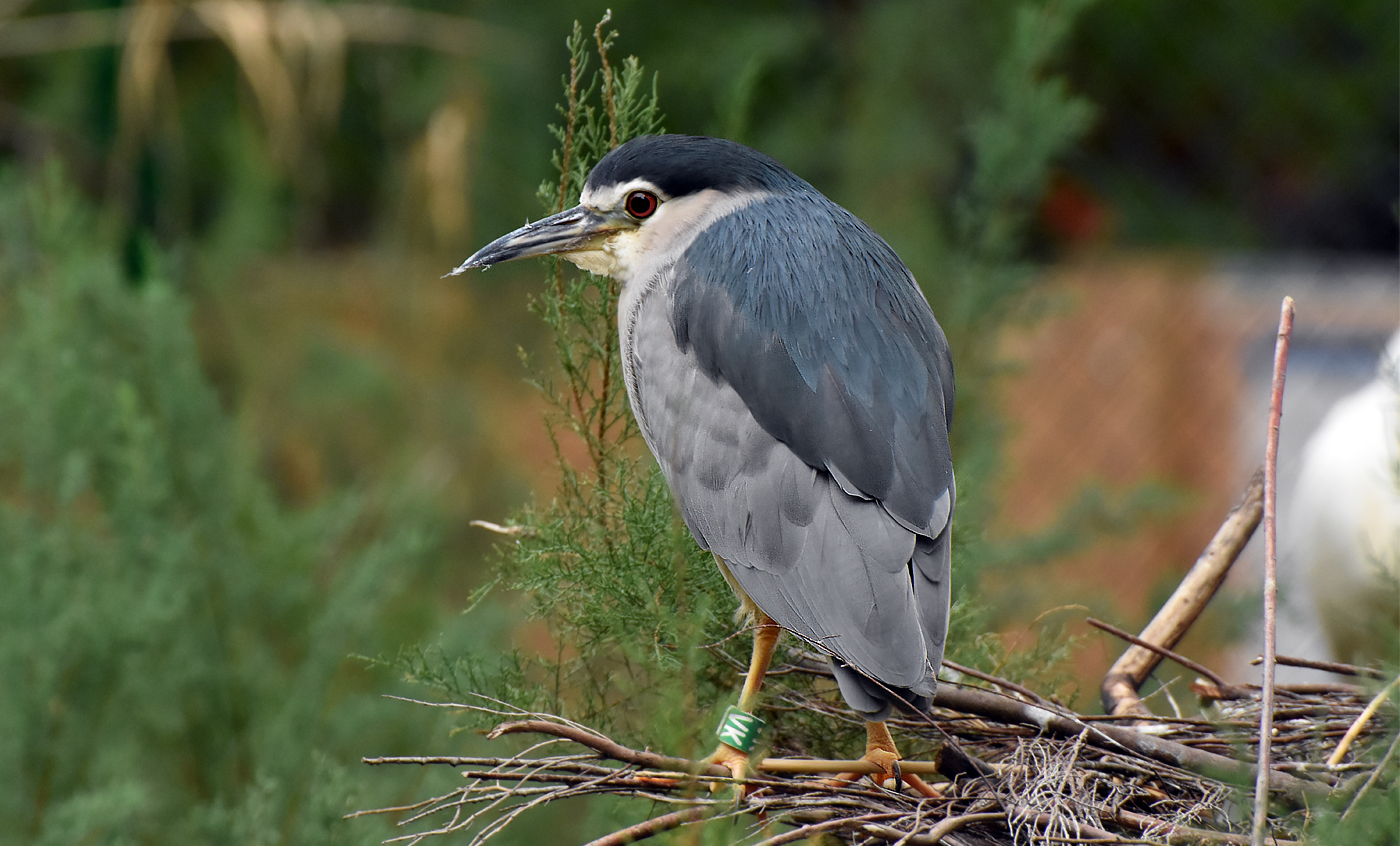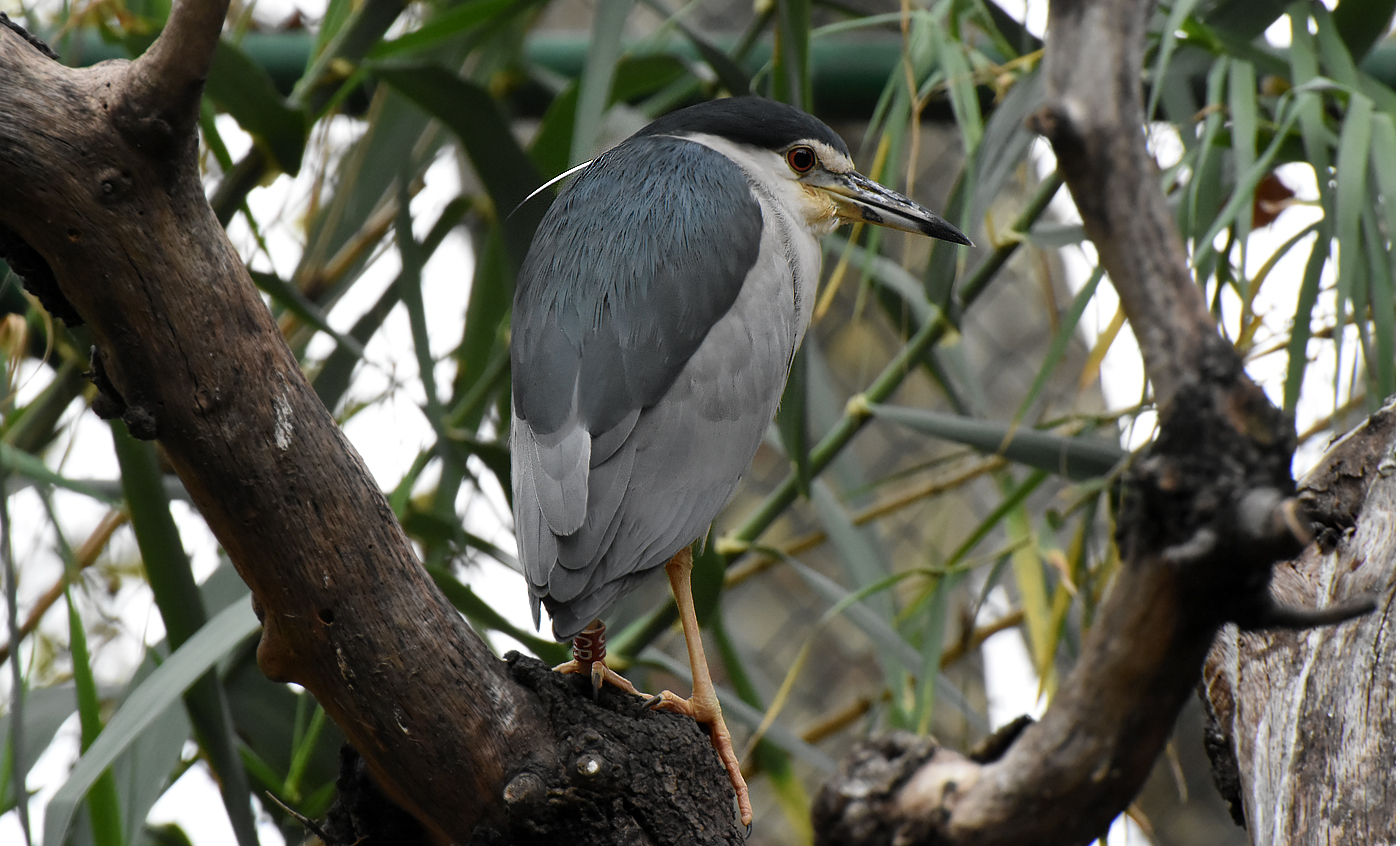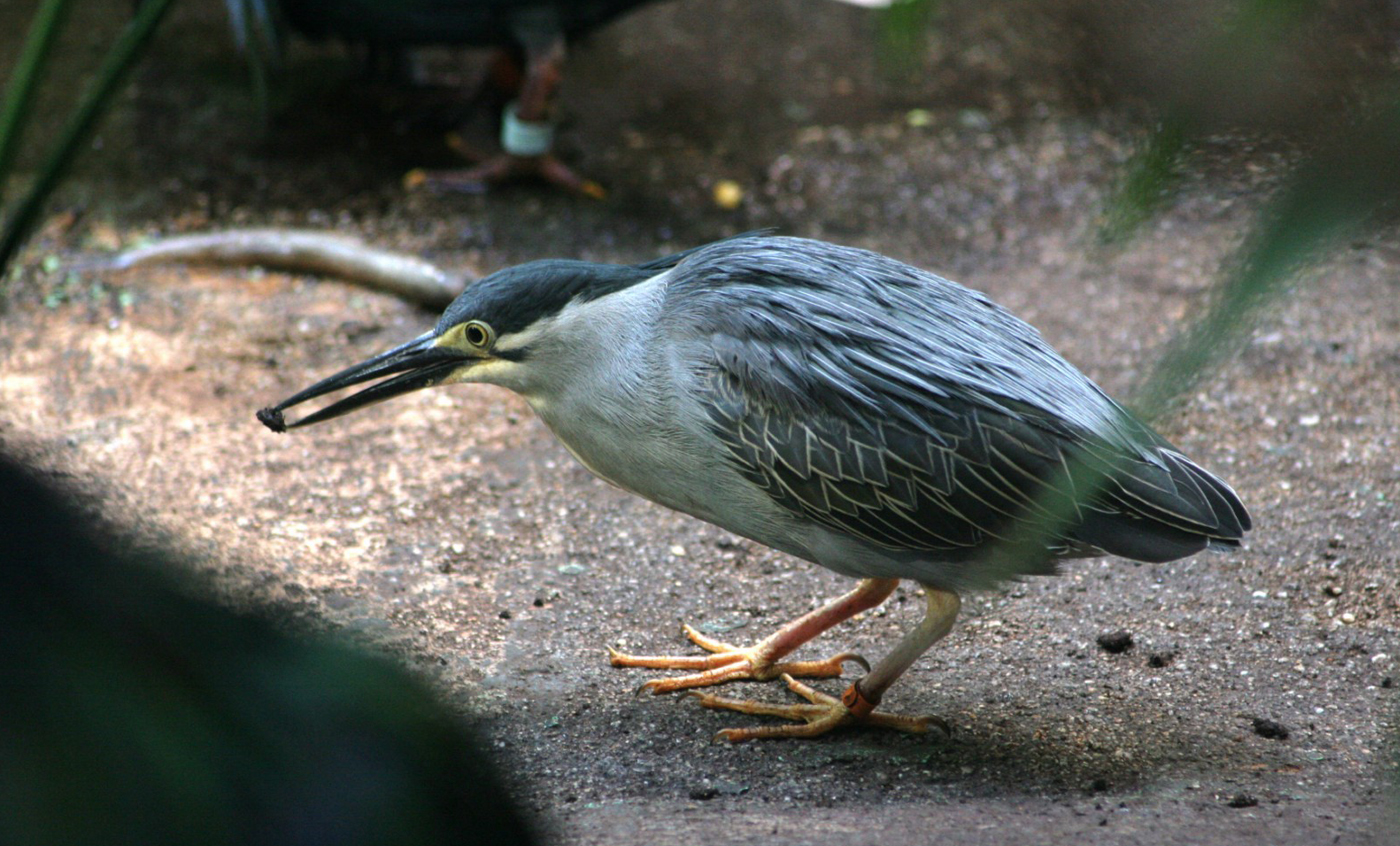Black-crowned night-heron
The Latin name of this species, which means “night crow” indicates that it tends to come out more at dusk and night-time.
Its diet of insects, fish and amphibians is occasionally supplemented by the chicks of other birds that the black-crowned night heron raids from their nests.
This species depends very heavily on trees at river banks, meaning that all the recent felling of these trees has led to it vanishing from many areas in Europe.
Natural habit
From central North America to the extreme south of South America, central and southern Europe, Africa and southeast Asia

- Distribution / Resident
- Breeding
- Wintering
- Subspecies
Risk level
- Extint
- Extint in the wild
- Critically endangered
- In Danger
- Vulnerable
- Near threatened
- Minor concern
- Insufficient data
- Not evaluated
Taxonomy
Physical characteristics
Biology
Reproduction
Biology
With the black and white pattern of the adult bird’s plumage and its large eyes, the black-crowned night heron has more crepuscular habits. It has a long sharp beak, although not so pronounced as other herons—especially white ones—and relatively short thick legs. Its crown and dorsal are completely black and the wings are light grey, fading to a lighter or even white colour on the face and belly.
A cosmopolitan species, it inhabits wooded shores always close to wet areas on all continents, except for Australia.
Its diet, comprised of fish, amphibians and insects, is sometimes enriched by the chicks of other birds that the heron pilfers from other nests.
With a highly defined breeding period in temperate zones and extremely long in tropical areas, the night heron nests in colonies that vary in size from small to several hundred specimens. There can sometimes be more than 500 nests in a single tree, although it is more common to see it nest with other Ardeidae species. They tend to build their nest in branches and vegetable matter from different trees and bushes close to wet areas, in which it lays between three and five light green eggs, which are mainly incubated by the female from 21 to 24 days. Youth mortality is high, and decreases as they get older.
With an eminently nocturnal behaviour, it can be spotted during the day hiding among reeds or tree branches, huddled up and discrete. During dawn and dusk, it starts to become active and this is when the bird is easy to watch, and even in large numbers.
It is sedentary and resident of a large part of its area of distribution, although in the majority of Europe, China and the United States it mainly arrives to summer and breed.
The Old World subspecies is widely dispersed and is found in very specific locations, with the most important populations in Asia. On the Iberian Peninsula, they build nests in central and south-western regions and in the Levante region of Catalonia and Valencia.
Species that is highly conditioned to fresh and salt-water wetland forests, the felling of trees and creation of larger farming areas have led to their disappearance in large areas of Europe.
This species has reproduced frequently at the Barcelona Zoo and a large number of specimens born here have been released in different natural parks in Catalonia.






